This post is written by one of our 2020-2021 Special Collections Research Travel Grant Recipients, Kevin James (University of Guelph).
During a recent stay at the Special Collections Research Center (SCRC), I had the privilege to engage in textual peregrinations, navigating through an extraordinary collection of travel-related manuscripts as part of my wider research program examining records of travel from the late nineteenth century to the interwar period. The SCRC holds an outstanding and varied collection of such records. They offer insight into the compass of individual journeys. They reveal ways in which travellers navigated acts of travel and memorialised their tour. They also illuminate diverse motivations behind travel, and relationships between ‘home’ and ‘away’.
When we think of tourism, we often imagine people leaving familiar places and entering unfamiliar terrain. This approach can elide the means by which transit between these two realms is effected, and also ways in which divisions between the familiar and the unfamiliar blur. The sea crossing is perhaps the most striking example of the liminal space between point of departure and destination (it is, in many dimensions of experience, its own destination), and a place where existing social solidarities—along axes of class, race and gender—are reinforced.
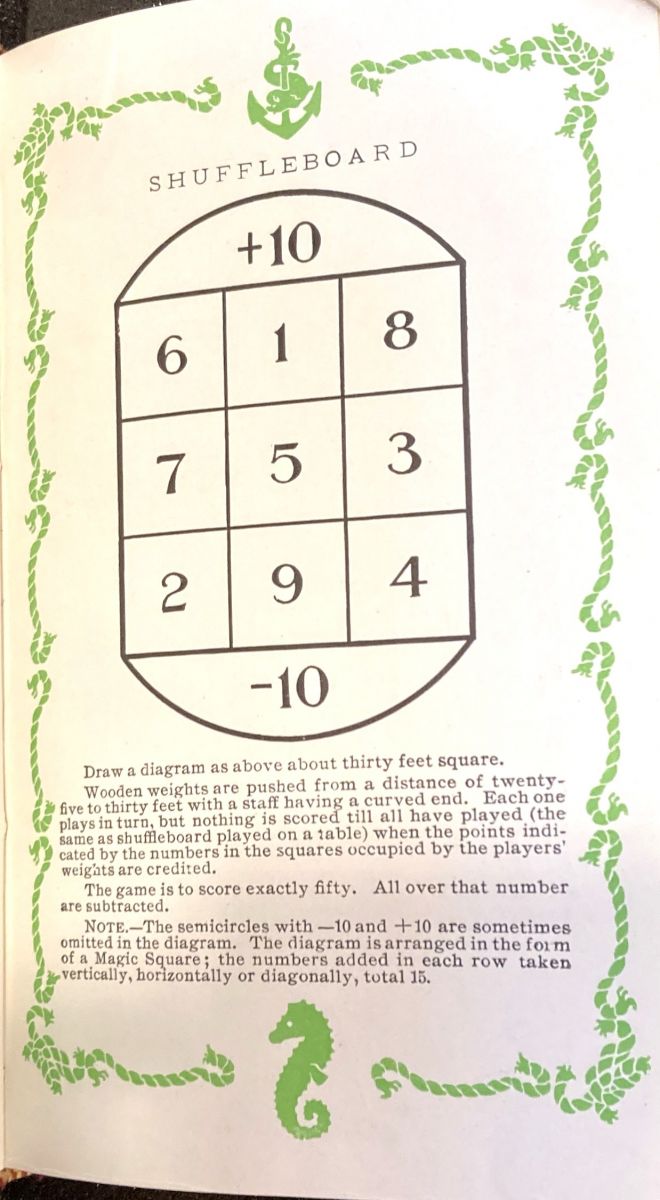 Image of Shuffleboard Description from ‘My Trip Abroad’
Image of Shuffleboard Description from ‘My Trip Abroad’
Source: USS Franconia Travel Diary (Europe) 1929, SC 01328, SC Box 96, folder 1Travel diaries offer insights into these passages, and they take a variety of forms. One popular means of documenting travel took the form of manuscript jottings within a published book supplied by major shipping lines. These books contained pages of printed text that provided general instruction on points of latitude and longitude, time zones, country flags and even ‘funnels and house flags’ and the rules of shuffleboard—a common on-board leisure pursuit. Subsequent pages were left blank, for travellers to record their observations, some headed ‘People I Met’, ‘Incidents’ and then a series of pages headed with dates and places. The SCRC holds an example in the form of ‘My Trip Abroad’. It was used by a traveller crossing as part of a party from New York to Europe, and begins on 12 July 1929 with an account of arriving New York, ‘after leaving Hartford’. The traveller then recounts, in detail, a sea passage on the S.S. Hamburg, which departed the next day to the cheers of a crowd. The first-hand account offers vivid and valuable insight into the experience of a transatlantic voyage. The opulent image of the sea cruise, for instance can often disguise its arduousness, and this diary offers a corrective to such images of sumptuousness and comfort. It includes accounts of seasickness, meals avoided due to queasiness and devoured with delight, diverse entertainments (including dominos and a great deal of shuffleboard!), and generous repasts enjoyed on board. The rhythm of the embodied experience of the voyage is richly captured, from gorging at banquets to the throws of illness.
The trip through northern Europe, including Denmark and Sweden, takes in many more destinations, but also rich accounts of waterborne travel along the Alba Rover in the S.S. Astrea, and a voyage aboard the S.S. Hansa from Stockholm through the Baltic Sea to Visby and then Kalmar. The inscriber provides many details of travel, from tour guides to meals to the wagon-lit train that brought the travellers from Kalmar to Berlin, then onward through Germany to Paris and London, England and Scotland before a return journey aboard the S.S. Franconia, departing Liverpool on 11 September for the transatlantic journey home. Shipboard life for this well-heeled traveller strikes one as a mixture of gruelling endurance of the high seas and the comforts afforded by resources and high status.
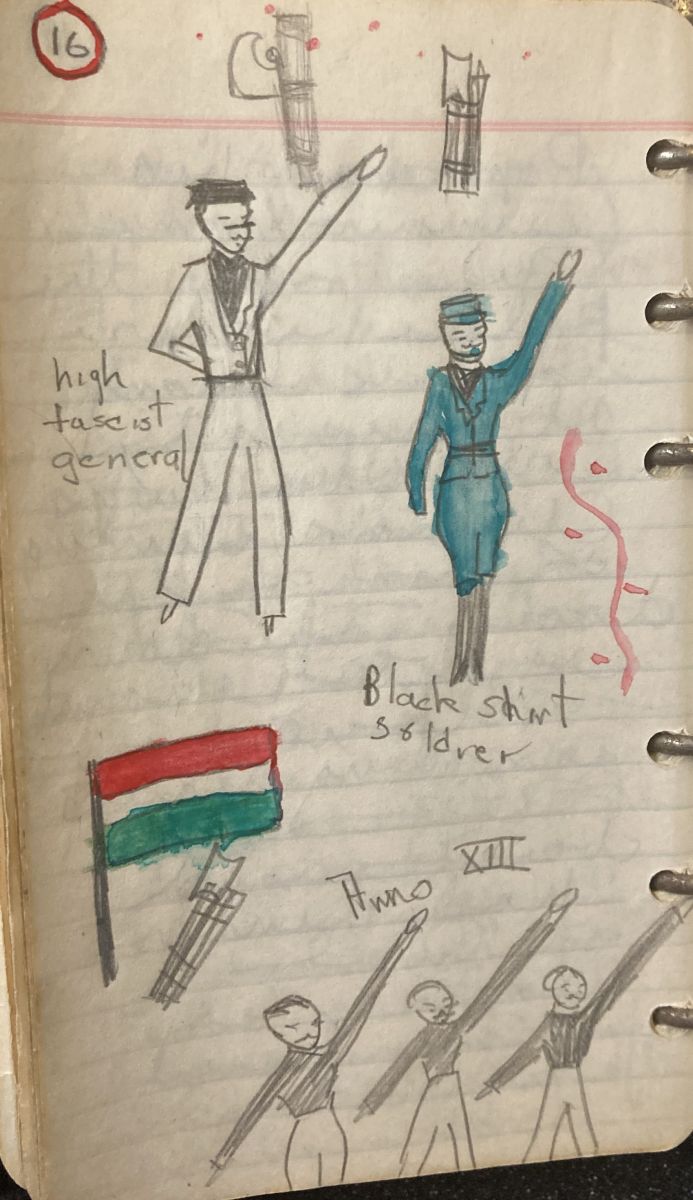 Image of Fascists taking salute. Source: Victoria Brown Travel Diary of Europe, 1935, Victoria Brown SC 00002, SC Box 1, folder 1
Image of Fascists taking salute. Source: Victoria Brown Travel Diary of Europe, 1935, Victoria Brown SC 00002, SC Box 1, folder 1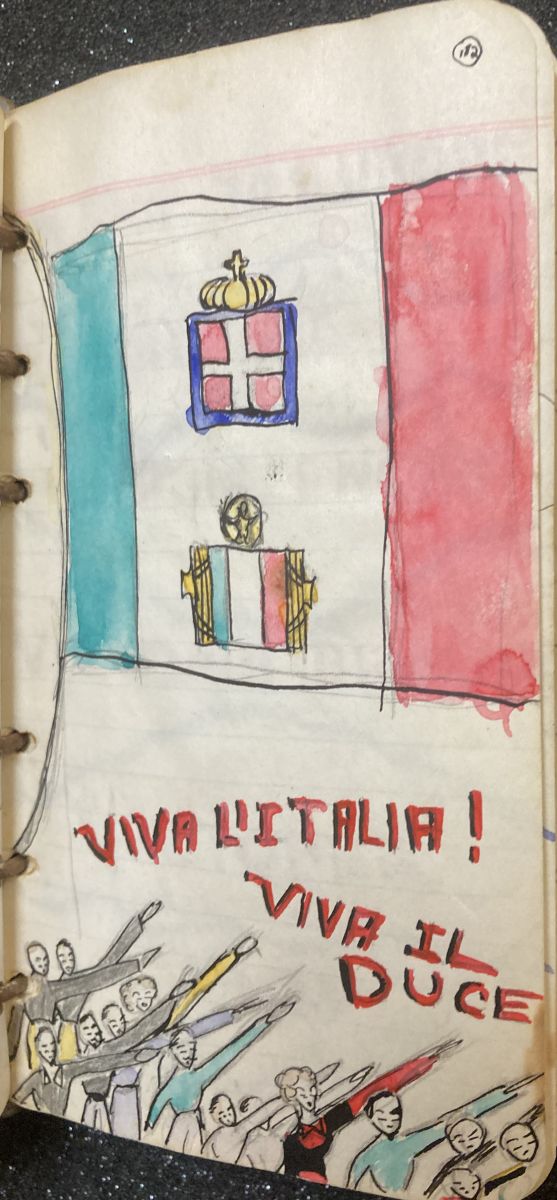 Image of Fascists saluting the flag. Source: Victoria Brown Travel Diary of Europe, 1935, Victoria Brown SC 00002, SC Box 1, folder 1
Image of Fascists saluting the flag. Source: Victoria Brown Travel Diary of Europe, 1935, Victoria Brown SC 00002, SC Box 1, folder 1The manuscript collection is especially strong in women’s manuscript travel accounts. They provide rich insight into gendered experiences of travel—and also underscore the autonomy that many women (of means) enjoyed in this era of expanded access of travel. The precocious jottings of young Victoria Brown (1921-2005) reflect her perceptiveness and politically astute observations, as well as her skill in illustration. She remarks on the rising Fascist movement in Italy as she travelled with her family through Europe, illustrating the diary (which, unlike the S.S. Hamburg traveller to Europe, is a ringed diary structured by lined pages) with remarkable (and foreboding) images.
An even greater propensity to illustrate can be found in Marie Katherine Seegelken’s delightful diary of her 1934 tour aboard the S.S. Catalina leaving California for Christobal (like other writers, she records having ‘[s]lept like the devil last night + a bit disgruntled this morning’ on 7 August, and two days later records she had ‘too much for luncheon’. Amongst her many evocative shipboard illustrations is one of a ‘Stevedores’ rendezvous on lower deck’. On 10 August, she mischievously records that the weather was so hot that the ‘[d]ining room resembled a nudist colony’.
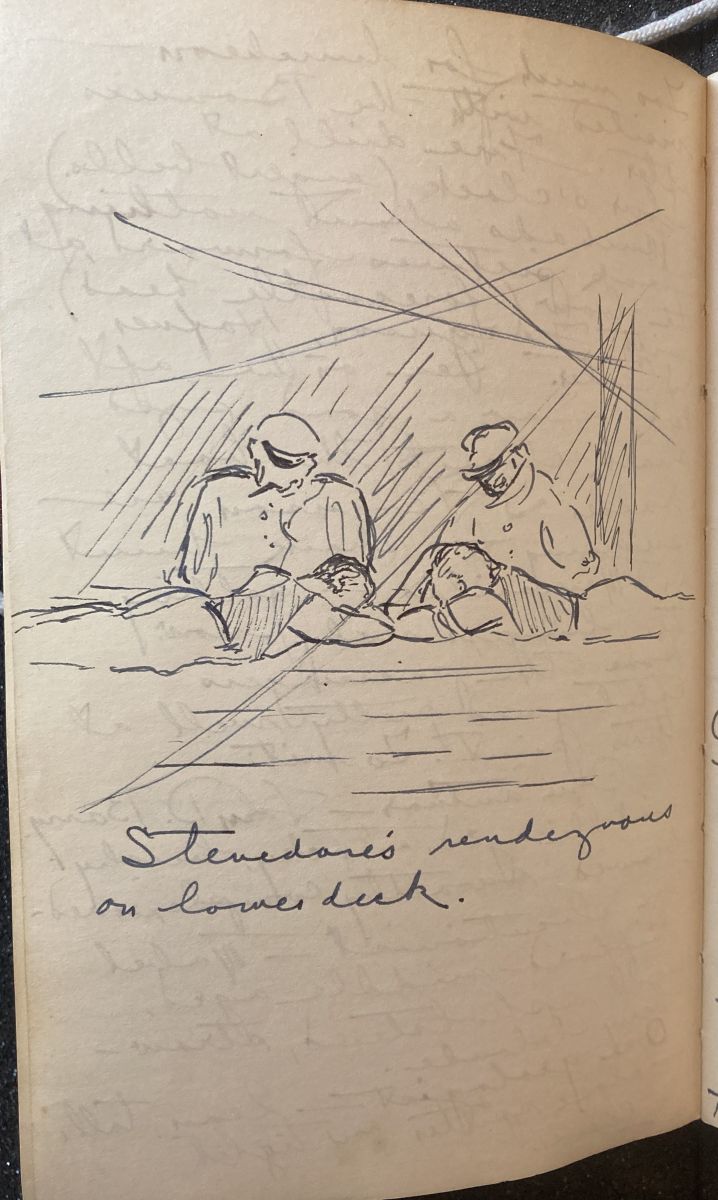 Illustration of Stevedores’ Rendezvous on Lower Deck. Source: Marie Katherine Seegelken’ 934 diary of Marie Katherine and Oliver E. Seegelken’s South American sea voyage, Marie Katherine and Oliver E. Seegelken Papers
Illustration of Stevedores’ Rendezvous on Lower Deck. Source: Marie Katherine Seegelken’ 934 diary of Marie Katherine and Oliver E. Seegelken’s South American sea voyage, Marie Katherine and Oliver E. Seegelken Papers
01/Mss, Acc. 2014.083, Folder 2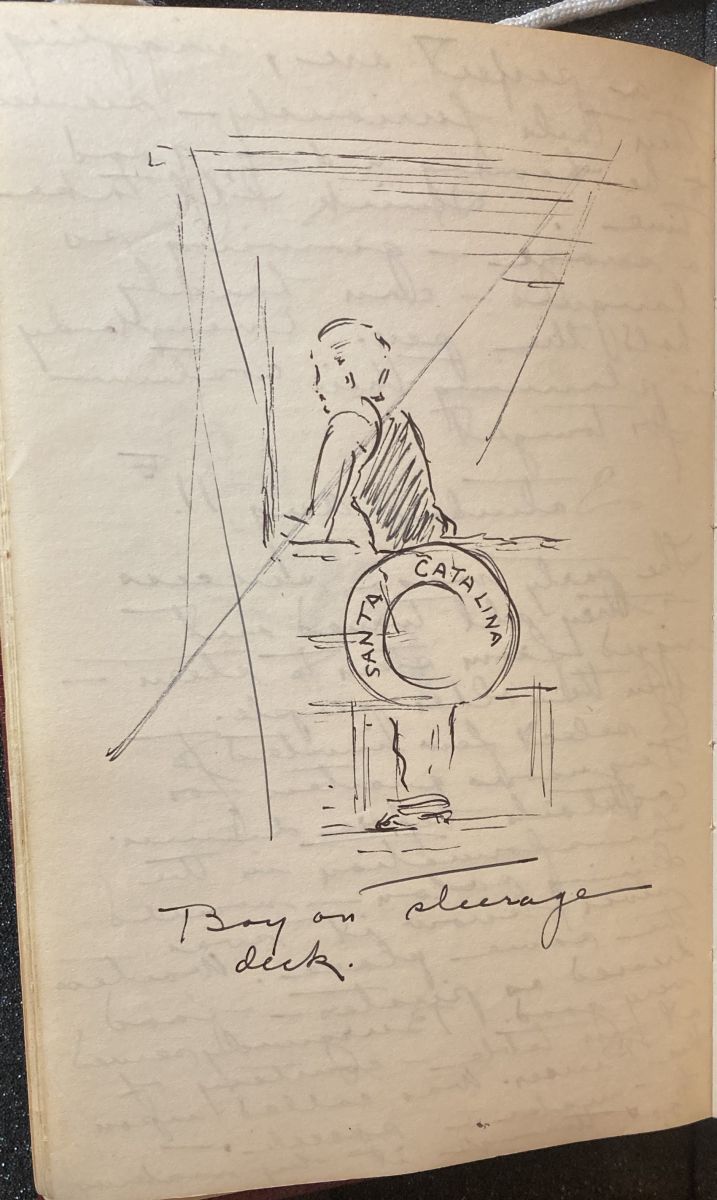 Illustration of boy on steerage deck. Source: Marie Katherine Seegelken’ 934 diary of Marie Katherine and Oliver E. Seegelken’s South American sea voyage, Marie Katherine and Oliver E. Seegelken Papers
Illustration of boy on steerage deck. Source: Marie Katherine Seegelken’ 934 diary of Marie Katherine and Oliver E. Seegelken’s South American sea voyage, Marie Katherine and Oliver E. Seegelken Papers
01/Mss, Acc. 2014.083, Folder 2As the diversity of material formats of these diaries show, the books themselves reveal how publishers and stationers responded to market demand by producing a wide variety of pre-printed travel diaries, or albums of empty pages that could be adapted for the purpose. Ward’s ‘A Line a Day Book: A Condensed, Comparative Record for Five Years’ offered inscribers an especially novel means of record keeping, inviting inscribers to produce separate entries for each of five years, all on one page. Volumes in the Virginia Taylor McCormick Papers demonstrate the ways in which they were adapted by their users. One, from 1910, details a trip that began with a sailing from Hoboken to Cherbourg (though contains no details of the passage), and then sees McCormick cross out the printed dates that are headings on the printed page, using it instead as a standard travel diary, eschewing its printed structure. Her 1929 travel diary of a Mediterranean cruise, by contrast, is recorded in a partly printed book, ‘My Travels’. Much like the ‘My Trip Abroad’ book detailed at the start of this blog, it offers some travel information in the first pages regarding postage rates, distances, and postage times to reach destination, times differences, currency value and other details, and thereafter prescribes space on each page for the date, destination, and route, most of which she completed according to the prescribed template.
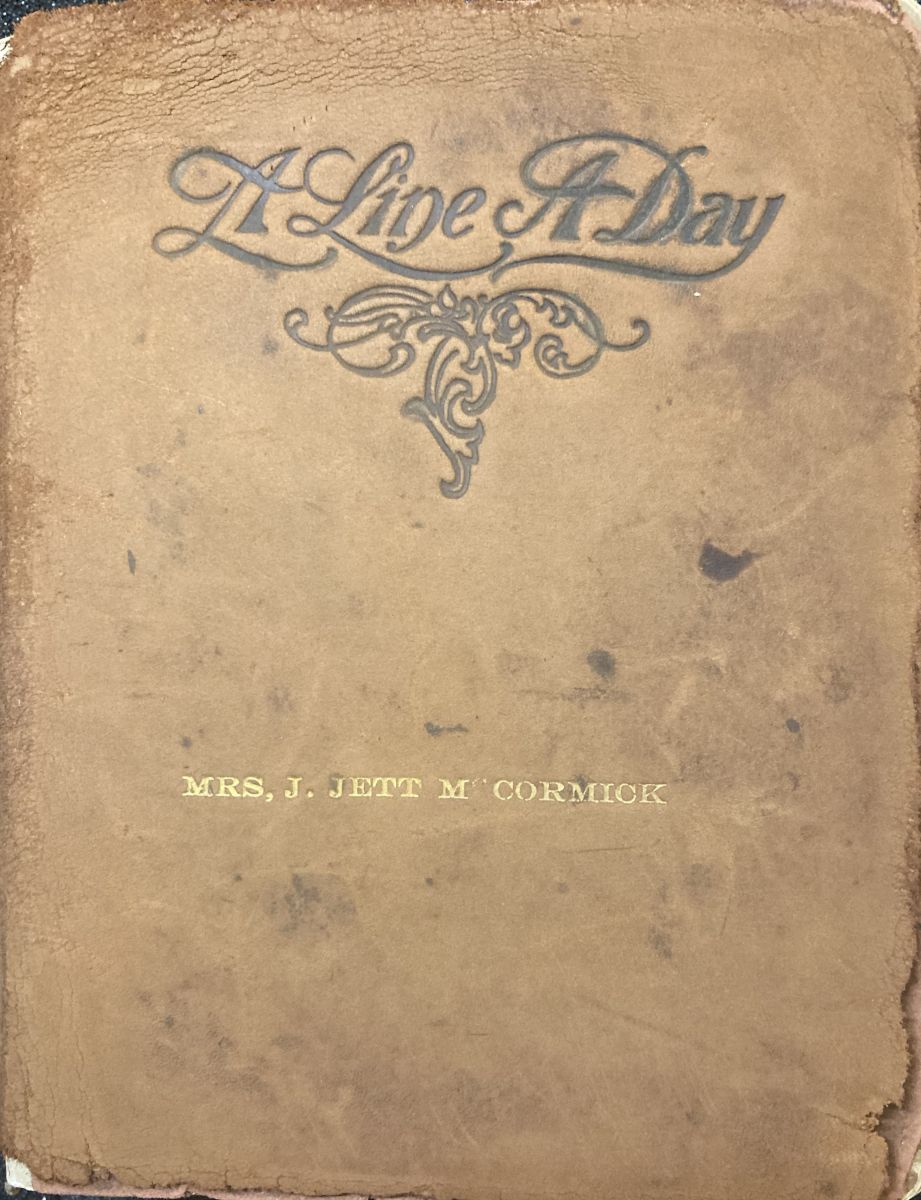 Cover of "A Line a Day" Travel Diary. Source: Virginia Taylor McCormick Papers, 65 M 13, Box 4
Cover of "A Line a Day" Travel Diary. Source: Virginia Taylor McCormick Papers, 65 M 13, Box 4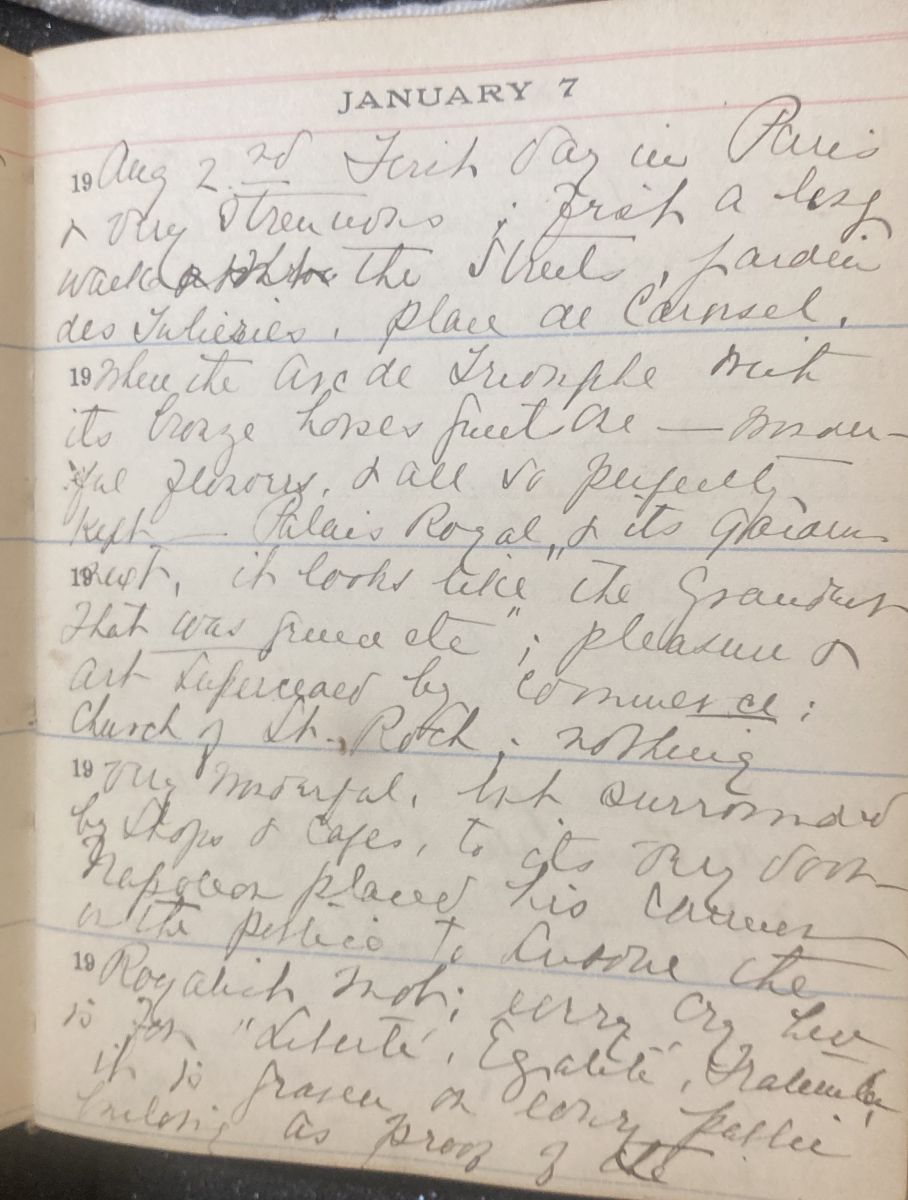 Page from "A Line a Day" Travel Diary. Source: Virginia Taylor McCormick Papers, 65 M 13, Box 4
Page from "A Line a Day" Travel Diary. Source: Virginia Taylor McCormick Papers, 65 M 13, Box 4This remarkable collection offers a window onto engagements with time and space during the oceanic passage. It also reveals the variety of material forms which diaries assumed. The SCRC’s outstanding collection enables us to ask probing questions about experiences of travel in modern age, which in turn advances our understanding of the ways the familiar and the unfamiliar collide in acts of moving across the ocean.